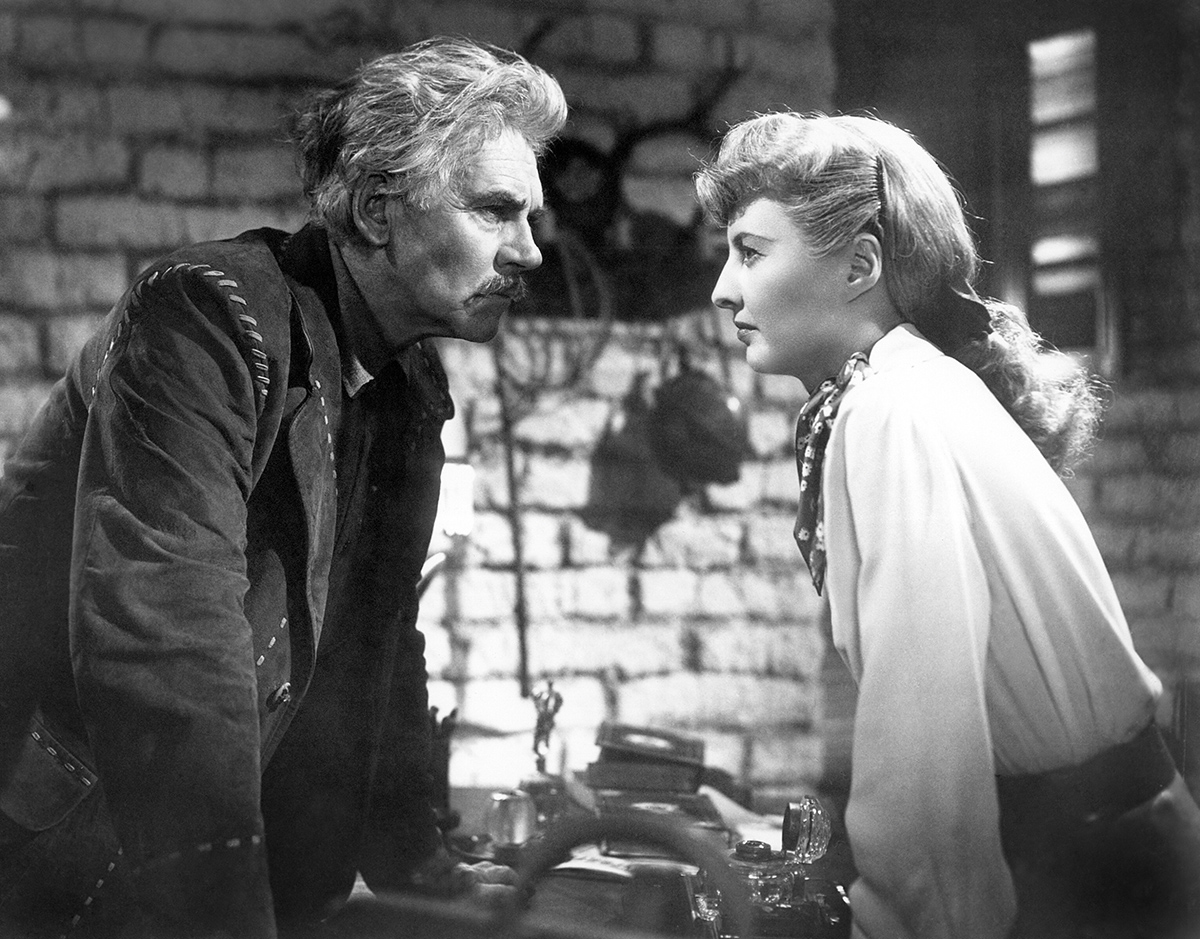Out of Focus: The films of Anthony Mann come to Westwood

“The Furies,” a Western starring Walter Huston and Barbara Stanwyck, is one of a selection of films by director Anthony Mann screening at UCLA’s Billy Wilder Theater from Jan. 31 to March 30. The series is titled “Dark City, Open Country: The Films of Anthony Mann.”
By Ian Colvin
Jan. 28, 2014 12:34 a.m.
Modern cinema is indebted to Anthony Mann, even if few are aware of it. Working under strict production codes and B-picture budgets, Mann crafted a string of brilliant movies in the 1940s and 1950s that chronicled outsiders and anti-heroes long before they became popular.
These were films made practically on the run, churned out in a matter of weeks as if on an assembly line. And yet many of these films are still viewed today, having become classics in their respective genres, from noir to Western. A selection of Mann’s films will be screened at the Hammer Museum’s Billy Wilder Theater to highlight the career peaks of the master filmmaker. The series is entitled “Dark City, Open Country: The Films of Anthony Mann,” and runs from Jan. 31 to March 30. Tickets are free for all UCLA students with a valid ID.
There was a psychology in the works of Anthony Mann, a depth not found in the films of many of his contemporaries. He was one of few American filmmakers of the time interested in the idea of moral ambiguity. His characters are men and women who are not defined in one-dimensional terms; they are not clear-cut embodiments of “good” or “evil.”
Because Mann was most famous for his allegorical Westerns and rough noir pictures, I will be highlighting one film that is being screened from each of these genres.
“The Furies” (1950)
Playing Friday
American folklore is dominated by legends of the Wild West: its sweeping plains, its saloons, its brothels and its violent shoot-outs between good guys who wear white and bad guys who wear black. “The Furies” is not set in such a simplistic world.
It takes place in the New Mexico Territory and focuses on egomaniacal cattle rancher T.C. Jeffords (Walter Huston in his final role) and his vengeful daughter Vance (Barbara Stanwyck). Vance becomes angry at T.C.’s control over her life, as well as his new woman, so Vance decides to disfigure her father’s new love interest. Vengeance ensues between father and daughter, and more people end up dead in the crossfire.
It’s one of the first Westerns of its kind – cerebral, dark and utterly demoralizing. Deeply entrenched in the pessimism of film noir, “The Furies” signals a move away from the 70-minute singing cowboy films of the ‘30s and ‘40s. It’s far more brooding and twisted, lacking the compassion and humanism of the films of Gene Autry and Roy Rogers. It’s more adult, and more realistic, than those earlier films.
It’s hard to imagine that the psychological Westerns of the late 1950s and 1960s – such as John Ford’s masterpiece “The Searchers” and the bloodstained, operatic epics of Sam Peckinpah and Sergio Leone – would have been possible if “The Furies” hadn’t helped lay the groundwork for such films.
“He Walked by Night” (1948)
Playing Feb. 9
A riveting film noir gem from 1948, “He Walked by Night” still packs a punch with its stark documentary approach and psychological depth. Mann wasn’t credited for directing the film because another director, Alfred L. Werker, was initially tacked onto the project. But most film historians believe that it was he who was the major creative force behind its production.
Filmed in a gritty, realistic style that lends the film its spontaneity, “He Walked by Night” follows a killer out on the prowl through the urban jungle of Los Angeles.
Based on the true story of a veteran who came back from World War II and started shooting police officers to get his kicks, “He Walked by Night” is one of the more brutal noir movies of its day. Unlike most other films from the era, it spends time focusing on the murderer’s story rather than solely on the police investigation. The result is a flushed-out character study on both the killer and the police. In its final sequence, the cat-and-mouse manhunt reaches a bloody conclusion in the city’s sewer system.
The film’s story of a character on the outer fringes of society clearly opened the door for a slew of films released by the so-called New Hollywood filmmakers of the late 1960s and 1970s, notably “Taxi Driver” by Martin Scorsese. The police procedural structure of “He Walked by Night” even inspired Jack Webb (who plays a small role in the film) when he created his successful radio and television series “Dragnet.”
“He Walked by Night” is characteristically Mann – stark, hopeless and full of moral decay. In other words, it’s a great movie.


